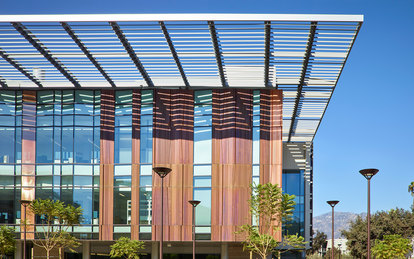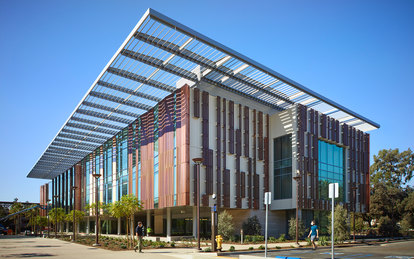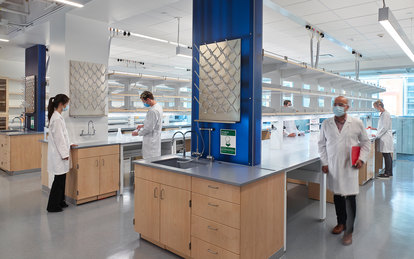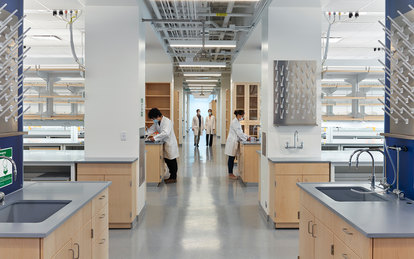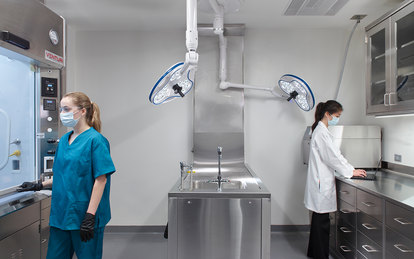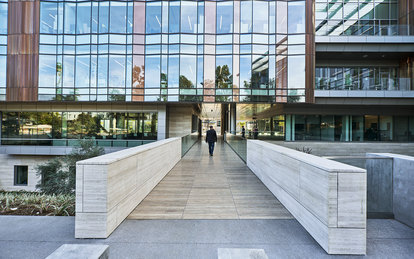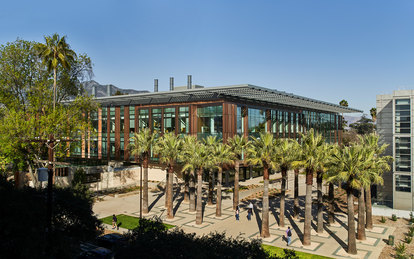California Institute of Technology - Chen Neuroscience Research Building
Home to a world-renowned research community, Caltech’s new neuroscience research building represents a new model of laboratory design. It creates centralized hubs for cross-discipline collaboration, with plug-and-play suites that can be modified to suit specialized research needs.
Client
California Institute of Technology
Location
Pasadena, California
Markets/Services
Architecture, Interiors, Lab Planning, Lighting Design, Science & Technology
Size
150,000 SF
Featured Awards
Award for Excellence in Innovation, Lab Design Excellence, Lab Manager, 2022
Illuminating Engineering Society (IES), Illumination Award of Merit, 2022
Design Build Institute of America (DBIA), Industrial/Process/Research Facilities Category, National Award of Merit, 2021
Prix Versailles World Award, Campus, 2021
The growing prevalence of neurological disorders has led to a critical need for more advanced neurological research. The California Institute of Technology (Caltech) recognized the demand for a new research building that could both meet the highly specialized needs of today’s neuroscience advancements, be capable of future relevancy, and bring together the diverse teams of scientists contributing to brain studies and focus areas of related research.
Rather than conducting research within the confines of their individual disciplines, neuroscience now recognizes the advantages of cross-fertilizing knowledge from biological sciences, physics, engineering, chemistry, social science and other disciplines. It also takes an interdisciplinary approach to focusing on topics—genomics, imaging or pharmacology, for example—in the search for new ways to treat and prevent brain disorders. Yet at the same time, the delicate nature of neuroscience still demands specialized spaces for behavioral testing, wet and dry labs, and other critical environments.
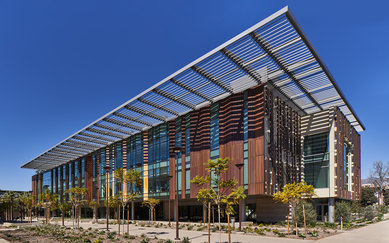
SmithGroup worked through many iterations of laboratory planning and design concepts with Caltech and decided upon a model that they call “transparent” lab design. It places the open labs back-to-back, allowing light all the way through from one side of the building to the other. This brings the two open lab environments together for more flexibility of assignment and interaction, creating centralized hubs for cross-discipline collaboration. Dry labs are designed around an infrastructure module and can convert back to wet lab when needed. Suites are designed with a framework of generalized features that can be modified into behavioral, microscopy, gnotobiotic and other specialized suites to suit ever changing research needs.
The Chen building is going to help us enormously. It gives extraordinary scientists the tools to make discoveries and the companionship of colleagues that will force new directions and develop new paradigms.
Thomas F. Rosenbaum
President, Sonja and William Davidow Presidential Chair, Professor of Physics, Caltech
The versatile design rethinks and reorganizes how different fields of science interact, so researchers can work together more productively. It enables the Chen Neuroscience Research Building to both retain the specialized spaces vital to neuroscience research, yet also bring together the various research groups that had been inefficiently dispersed through different levels of a building, or even different buildings on campus.
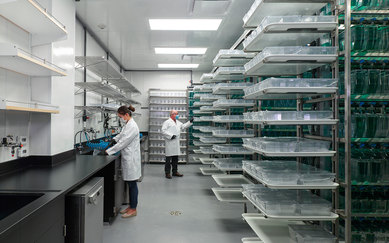
The building also considers the human experience in its design. Historically, basements and sub-basements have housed optics labs, laser labs and other critical environments in neuroscience. Sunken gardens, window wells and other strategies mean researchers are no longer confined to dark spaces.
An integrated design approach was taken to address the high energy usage programs of labs to achieve the highest sustainability goals for the project. Natural gas-fired fuel cells were utilized to provide resilient primary power for the facility utilizing an on-site solution. High efficiency MEP systems with energy recovery throughout drove the EUI down and will provide long term energy savings.
The Chen Neuroscience Research Building is located adjacent to the Broad Center for Biological Sciences, forming a strong biological research presence for the University and the City of Pasadena. In structure, the building’s 50-foot height, three-story makeup closely aligns with that of the Broad Center, allowing for consistency to further enhance the university-community connection and gateway feel. In materiality, it utilizes classic Southern California elements, such as travertine and copper, to serve as warm complements to the surrounding landscape.
With an integrative design specifically designed to foster learning and interaction among the world’s top neuroscientists, the Chen Neuroscience Research Building brings researchers one step closer to unlocking the great mysteries of the brain.
